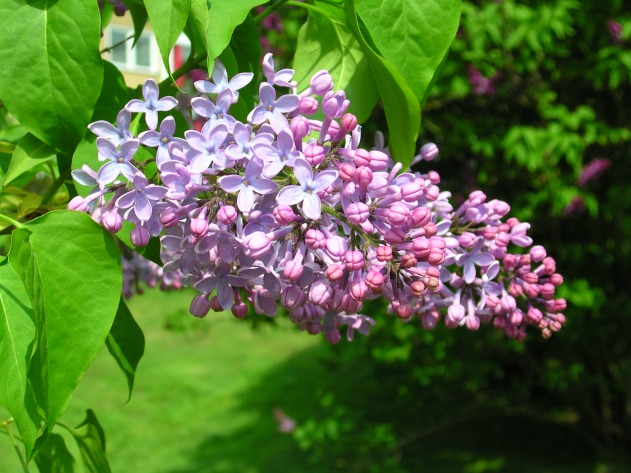The one downside to many lilac varieties is their annual sucker growth.
The one downside to many lilac varieties is their annual sucker growth. Sucker is a vernacular word; in my usage, it means shoots growing from the base, the root crown, and surrounding area roots.
I have seen decades-old lilacs ignored and allowed to run nature’s course. They don’t look too bad, but so thick that a mouse might need a map. It becomes impossible to tell where the lilac and its many shoots begin and end. Indeed, there is no end; it is just one huge old lilac whose upper circumference is matched by that of the width of its shoots.
These old tangles are a major pruning job and take hours to clean out. If you have the space and can live with extra-shaggy, then don’t prune.
Little tree
Most lilac pruning is done to achieve specific visual goals, and a look I call “little tree” is the most popular. Little tree refers to a lilac or other shrub that has been cleaned out at the bottom, all suckers removed, and a balanced group of clean old stems left to spread and flower. This allows light to get to the surrounding soil so that understory plants can thrive. It also shows off the shrub to its best. Almost all flowering shrubs that we grow look very good pruned this way.
The secret to yearly maintaining lilacs is this: when the new suckers appear and are only inches high and still green, they can be easily pulled out by hand. No saws or loppers required. When small green suckers appear—and they will—pull them out by hand while you still can. Perhaps another garden task is not what you were looking for but this is the easiest and cheapest method of all.
Pests & disease
Relatively pest-free lilacs occasionally get some leaf miners and caterpillars. If only a few stop by for lunch, fine. If the plant is really suffering, you may want to step up your defenses.
Lilacs are also susceptible to a bacterial pathogen called Pseudomonas syringae or lilac blight. When infected, shoot tips will turn black and shrivel and the bacteria will start to move into larger branches. This is where your weekly inspection of your garden will really pay off. By removing diseased branches, you can save the life of your lilac. When removing these infected branches, cut a foot below into healthy tissue. This will leave your hand pruners clean so you don’t reinfect with each cut you make.









